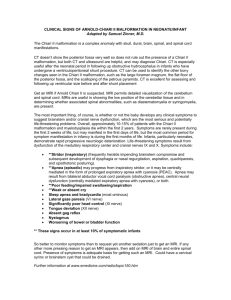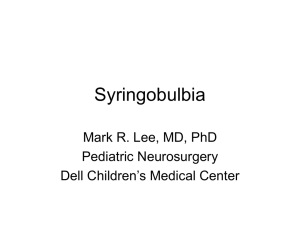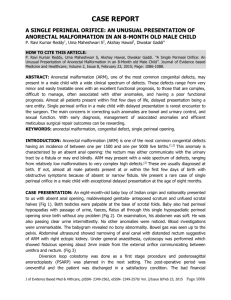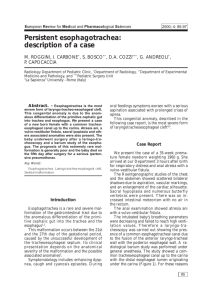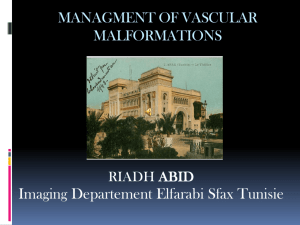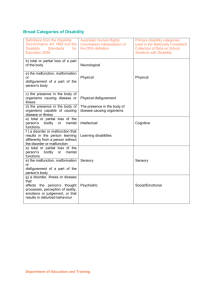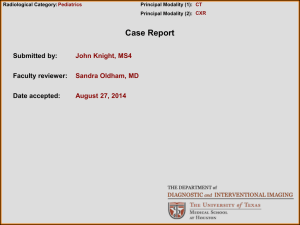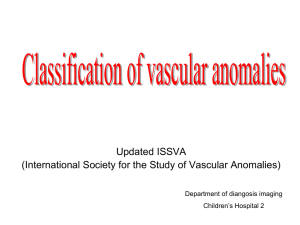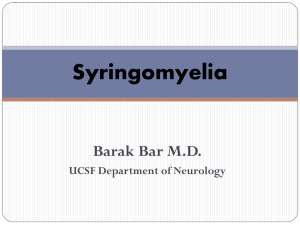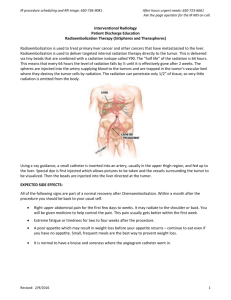CVM Final Ebmo
advertisement
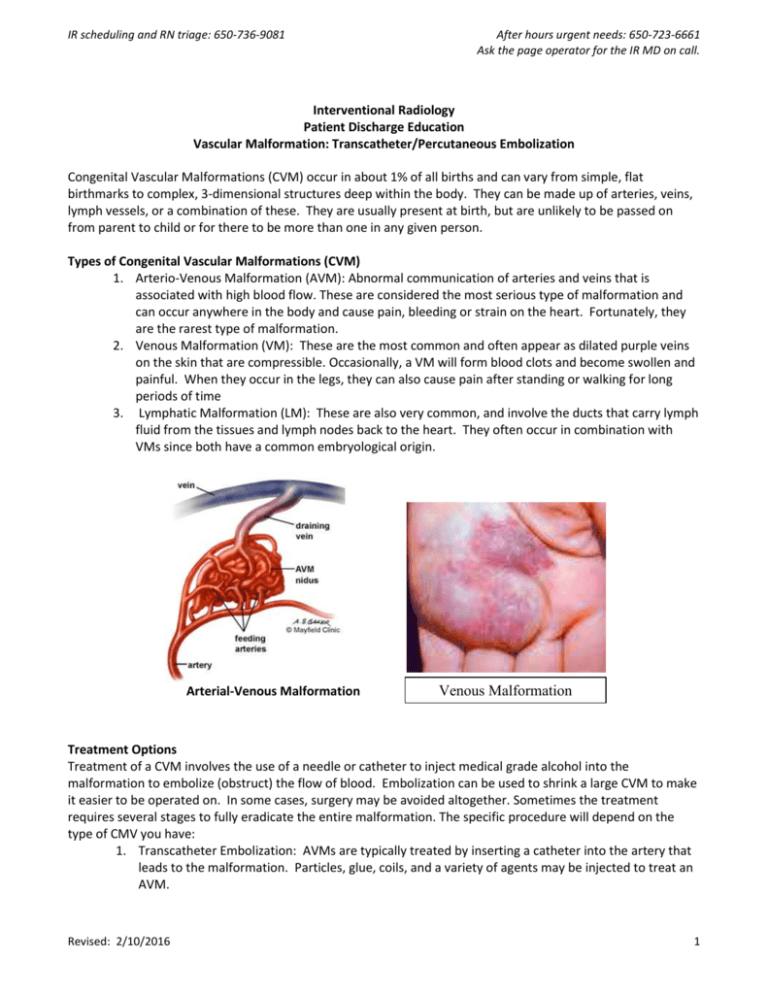
IR scheduling and RN triage: 650-736-9081 After hours urgent needs: 650-723-6661 Ask the page operator for the IR MD on call. Interventional Radiology Patient Discharge Education Vascular Malformation: Transcatheter/Percutaneous Embolization Congenital Vascular Malformations (CVM) occur in about 1% of all births and can vary from simple, flat birthmarks to complex, 3-dimensional structures deep within the body. They can be made up of arteries, veins, lymph vessels, or a combination of these. They are usually present at birth, but are unlikely to be passed on from parent to child or for there to be more than one in any given person. Types of Congenital Vascular Malformations (CVM) 1. Arterio-Venous Malformation (AVM): Abnormal communication of arteries and veins that is associated with high blood flow. These are considered the most serious type of malformation and can occur anywhere in the body and cause pain, bleeding or strain on the heart. Fortunately, they are the rarest type of malformation. 2. Venous Malformation (VM): These are the most common and often appear as dilated purple veins on the skin that are compressible. Occasionally, a VM will form blood clots and become swollen and painful. When they occur in the legs, they can also cause pain after standing or walking for long periods of time 3. Lymphatic Malformation (LM): These are also very common, and involve the ducts that carry lymph fluid from the tissues and lymph nodes back to the heart. They often occur in combination with VMs since both have a common embryological origin. Arterial-Venous Malformation Venous Malformation Treatment Options Treatment of a CVM involves the use of a needle or catheter to inject medical grade alcohol into the malformation to embolize (obstruct) the flow of blood. Embolization can be used to shrink a large CVM to make it easier to be operated on. In some cases, surgery may be avoided altogether. Sometimes the treatment requires several stages to fully eradicate the entire malformation. The specific procedure will depend on the type of CMV you have: 1. Transcatheter Embolization: AVMs are typically treated by inserting a catheter into the artery that leads to the malformation. Particles, glue, coils, and a variety of agents may be injected to treat an AVM. Revised: 2/10/2016 1 IR scheduling and RN triage: 650-736-9081 After hours urgent needs: 650-723-6661 Ask the page operator for the IR MD on call. 2. Percutaneous Ablation: Venous and lymphatic malformations are generally treated by inserting a needle directly into the malformation and injecting medical grade alcohol or a similar agent into them to get them to shrink down and perhaps go away altogether. General Information You Need to Know When You Get Home Follow the checked instructions below. You may have pain and swelling at the treated site for up to a month, but this is usually greatest at the start and should continue to decrease over time. Call the IR Nurse Line if you have any questions or any of the following o Increased redness at the site of injection or catheter access. o If you received a nerve block and numbness and/or weakness of the involved extremity persists for more than 24 hours. o Increasing pain that is not relieved with pain medication. o Increased swelling and/or tingling at site of treatment that does not respond to routine postprocedure care (see below). o Skin breakdown, blister, skin with blackened areas, or decreased ability to move the treated limb. You will receive a call from us at 1 week and 1 month after your procedure to see how you are doing. Interventional Radiology Contact Information Office Hours 8:00 am - 4:30 pm Post procedure questions and RN Triage: Phone: 650-736-9081 Fax: 650-736-7734 Email: irprocedure@stanfordmed.org for non- urgent concerns only Patients Who Have Received IV Sedation and are Discharged the Same Day You must have someone drive you home from the hospital. It is also preferable to have a responsible adult stay with you for the first night. For 24 hours after your procedure, do not do anything where you need to be mentally alert. This includes making important decisions, operating machinery, signing important papers, etc. Eat light for the first 24 hours, and then start eating more as you are able. Drink plenty of fluids. If you are taking pain medications: Take them as directed. Do not drink alcohol while taking narcotic pain medication. Do not drive until you are no longer taking narcotic pain medication. If you are constipated, drink more fluids and start taking an over-the-counter stool softener. Post Procedure Care (Check only those that apply to this patient) o Cold compresses to site for the first 2 days as needed for comfort. o Warm compresses to site after 2 days as needed for comfort. o Partial weight bearing: ____________ 5-7 days. o Non-weight bearing:_____________ with crutches 5-7 days. o Do not wear compression garment for the first 3 weeks. Revised: 2/10/2016 2 IR scheduling and RN triage: 650-736-9081 Revised: 2/10/2016 After hours urgent needs: 650-723-6661 Ask the page operator for the IR MD on call. 3

